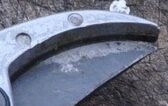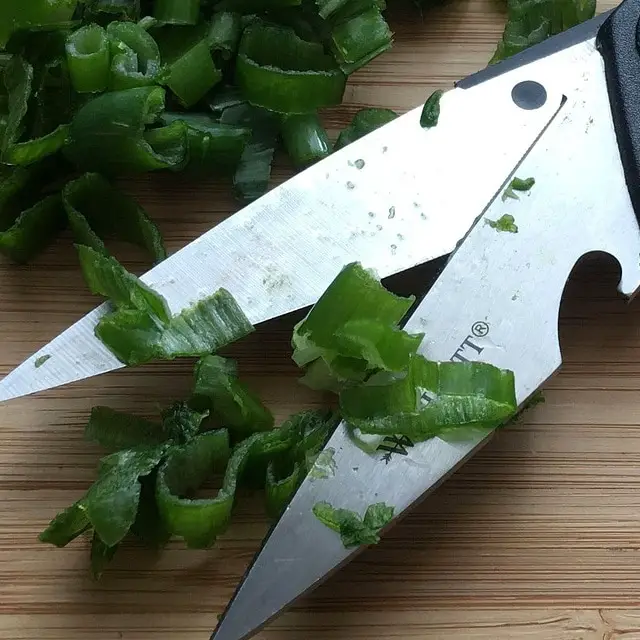
We all love experiencing ease in everyday activities. This includes gardening, cooking, and mowing our compounds. To achieve this ease, it is essential to take good care of the tools we use. Cleaning is also important when adjusting or aligning your grass shears and hand pruners. In this article, we shall examine the best way to take care of and clean our gardening and backyard shears. Care involves cleaning, oiling, disinfecting, sharpening, drying and proper storage.
By following these steps, you will find it easier to work with your tools, save on time, save the cost of constant tool replacement and provide the needed efficiency.
Table of Contents
Respective Features and Purpose
1. Pruning Shears
The main feature:
- Has two short blades.
The main purpose:
- Its used for cutting off branches of trees or plant stems and bushes.
2. Grass shears
The features include;
- Long handles.
- Handles are right angled to the blades.
Purpose;
- Used to cut grass along side walks and drive ways while standing.
Basic steps in taking care of your grass shears, hand pruners and pruning shears
STEP 1: Scrubbing
- Scrub your tools with a brush and water
STEP 2: Sharpening
- Use a file to work up from the base to the tip of the blades
STEP 3: Disinfecting
- Dip your tools in different water buckets with bleach water solutions
- Leave them to dry
STEP 4: Oil Coating
- Apply a thin layer of oil on the tools
- Oil lubricates your shears and prevents rusting
Common Cleaning Steps for Hedge Shears
Types of Hedge Shears
- Manually operated hedge shears.
- Electrically operated hedge shears.
Features of Hedge Shears
- Look like large scissors.
- Wooden or metallic handles.
- Rubber handle grips.
- Blades can be straight, curved, wavy or serrated.
- Some models have rubber bumper system at pivot to absorb shock as handles come together.
Purpose
- Tailored to cut several branches at once (not the whole branch as with hand pruning shears).
1. How to clean manually operated hedge shears
- Rinse or soak the tool in water: This is to remove surface soil.
- Scrap the blades with a brush: This removes plant residue.
- Dip a rug in solvent/turpentine and use it to wipe the blades, preferably outdoors.
- Dry the blades with a piece of cloth.
- Sterilize the tool by rubbing the blades with alcohol.
- Leave disinfectant in the tools for about 30 seconds.
- Wipe and dry.
2. How to clean electrically operated hedge shears
- Unplug the power cord.
- Use a brush to remove dirt and soil.
- Wipe the blades with a rug dipped in soapy water.
- Wipe the blades with a sponge dipped in rubbing alcohol.
- Dry the blades with a clean sponge.
- Spray the blades with a lubricant appropriate for garden tools.
ALSO READ: TOP 5 BEST ELECTRIC GRASS SHEARS 2021
How to Care for your gardening and Backyard tools
We cannot overemphasize the need to care for garden tools. If you aspire to achieve efficiency and avoid repairing/replacing your tools regularly, it is essential to give them the care they deserve.
Below are some of the ways you can achieve this;
1. Avoiding rust and removing dirt.
- Metallic tools and handles need to be dried after cleaning.
- This is necessary to prevent rust.
2. Proper sharpening.
- Sharpening shears promotes efficiency.
- A mile file is appropriate for sharpening blades to increase the functionality.
- Bent blades should be replaced.
3. Sprucing up garden tools.
- Appearance of the garden tools is greatly improved by cleaning, brushing, disinfecting, drying, sharpening, oiling and proper storage.
Various ways of Cleaning your hedge shears, hand pruners, and grass shears
1. HOW TO CLEAN WITH WATER
Common steps for hedge shears, grass shears, pruning shears and hand pruners.
Requirements
- a rag.
- a brush.
- plain water (preferably warm).
- liquid soap.
Steps to Follow
Step 1
Divide warm water among few buckets.
Step 2
Brush off soil particles and plant residues.
Step 3
Add liquid soap to water in buckets
Step 4
Wash the tools using a rug
Step 5
Rinse the tools in plain water.
Step 6
Dry the tools with a clean rug.
2. HOW TO CLEAN WITH OIL
This applies for all the tools, that is pruning shears, hand shears, hedge shears and grass shears.
Requirements
- Clean rug.
- Gloves.
- Dust mask.
- Eye protectors.
Steps to Follow
Step 1
Apply a thin layer of oil and leave it for 5minutes.
Step 2
Smooth and polish wooden handle using fine steel wool until the handle is dry.
Step 3
Leave it overnight.
Why use oil?
Applying oil on tools especially pivot areas and on blades lubricates them and prevents rusting.
Carefully apply the oil between blades.
Oil is best applied to dried tools.
What kind of oil should be used for garden tools?
The different types include;
- motor oil.
- Lamp oil.
- Tung oil.
- Cooking oil.
- Boiled linseed oil.
Which are the best oils?
- Boiled linseed oil
- Tung oil
These are best among the different available varieties.
Which is the cheapest oil for use on tools?
Sunflower oil is one of the cheapest oil available.
While using it, moisten a bucket of sawdust with sunflower oil and dip clean the tools.
Sawdust acts as abrasive and oils the tools at the same time.
Does oiling prevent rusting?
Oil forms a protective layer that prevents direct contact between water and metallic parts in tools.
Why rub off excess oil?
A lot of oil left on tools can with time get sticky, its therefore necessary to wipe off the excess oil.
Oil wooden handles as well to prevent blisters.
Smoothen rough handles with a sandpaper to make work with them easier.
Properly oil moving parts as well.
ALSO READ: STEP BY STEP GUIDE ON HOW TO ADJUST OR REALIGN GRASS SHEARS AND HAND PRUNERS AT HOME
3. HOW TO CLEAN WITH ALCOHOL
This applies for all the tools, that is hedge shears, pruning shears, grass shears and hand pruners.
Alcohol is a disinfectant. Disinfecting tools prevents disease spread from soil particles in tools to land. This process is also called sterilizing tools.
Steps to Follow
First step is always to remove soil particles and plant residues using a brush or a rug.
Then clean using water and liquid soap.
- Dip tools in alcohol for 20minutes.
- Or dip a sponge in alcohol and wipe the tools.
- Allow to dry.
- Ensure to wipe the blades.
- Rinse off leftover bleach as is harmful to plants.
- Dilute disinfectants such as chlorine bleach as its harmful to plants.
Advantages of alcohol
- It can be used as a wipe without soaking.
- No need to wipe off.
Disadvantages of alcohol
- Very flammable.
Products that can be used as disinfectants alongside alcohol
Household disinfectants
An example of household disinfectants is lyson
Advantages
- Easy to access.
- Less corrosive.
Disadvantage
- Quite expensive compared to alcohol and chlorine.
Chlorine bleach
Advantages
- It is cheaper.
- Easy to access.
Disadvantages
- It is corrosive.
- It is less effective.
4. HOW TO CLEAN USING VINEGAR
This applies for all garden tools including hedge shears, grass shears, pruning shears and hand pruners.
Application
- Brush off soil particles and plant residues from plants.
- Clean the tools with water and a rug.
- Soak rusted tools in vinegar close to 3 hours.
- Scrub the tools with a brush.
- Rinse with plain water.
- Dry using a clean rug or sponge.
- Apply thin layer of oil to the tools.
Why use vinegar?
Vinegar prevents rust by reacting with it and dissolving it.
Which type of vinegar is more preferable?
White vinegar is more preferred.
This is because it is highly acidic and has a low sugar content.
Benefits of vinegar in the garden.
- It is an organic way to protect plants from diseases.
- You can easily spray white vinegar to weeds growing on walls and crevices.
- Water and vinegar solution sprayed to ants in the compound or garden is effective in killing them.
- Mixing a small amount of vinegar with water and watering the plants with that mixture improves soil acidity.
- Soaking garden tools in undiluted vinegar dissolves rust.
- Spraying snails and slugs with a mixture of vinegar and water protects your garden.
HOW TO MAINTAIN IN BETWEEN PARTS
This applies for all gardening tools including hand pruners, hedge shears, grass shears and pruning shears.
Cleaning between parts is important in preventing rust.
Rust-free tools make work faster, easier, reduces blisters, backaches, reduced costs of replacement and ensures good looking healthy shrubs.
Every backyard gardener needs knowledge on how to clean blades, handles and maintain them.
Maintaining your involves proper cleaning, repair and sharpening. It is necessary to clean between the parts since they are are susceptible to hideous dirt. You can achieve this by:
- Oil the pivot points to enhance efficiency.
- Hand pruners/pruning shears need to be put apart to get to the blade.
- You can slide the blade over the sharpening stone.
- Oil tools after sharpening.
- Hanging tools on a hook is a safe way to store and dry them until the next use.
- Clean dust and rust from tools using a brush or rug.
Other important tips
- Polish wood handles to prevent blisters.
- Oil blades, pivot and handles.
- Dry the oil for compete absorption and wipe off the excess.
- Look out for worn blades or cracked handles during smoothing and sharpening, these need replacement and are risky to work with.
- Use a file and sharpening stone to sharpen blades, use wet stones with oil or water or short bladed tools.
- Use gloves when handling sharpening file.
SUM UP
Did you know that most garden shears and blades intended to trim and cut plants are dated back to 50th century BC? It has been a great progress to what we have today.
We have solved challenges of old times and no gardener should struggle given all available tool inventions today. Any issues on how to clean hedge shears, pruning shears, grass shears and hand pruners have now been sufficiently explored and addressed.
FREQUENTLY ASKED QUESTIONS
1. Can I use hedge shears to cut grass?
Hedge shears are tailored to cut a small number of branches hence not advisable for use on grass (unless by experienced gardeners) due to their long handles.
2. What is the function of pruning shears?
These are useful in cutting plant stems or hard branches of trees.
3. How can I get rid of weeds growing on walls?
Spraying white vinegar is one easy home remedy to do away with weeds on walls and crevices.
4. Are there other disinfectants in place of alcohol?
You can disinfect using hydrogen peroxide by allowing it to soak in tools for about 10 minutes

